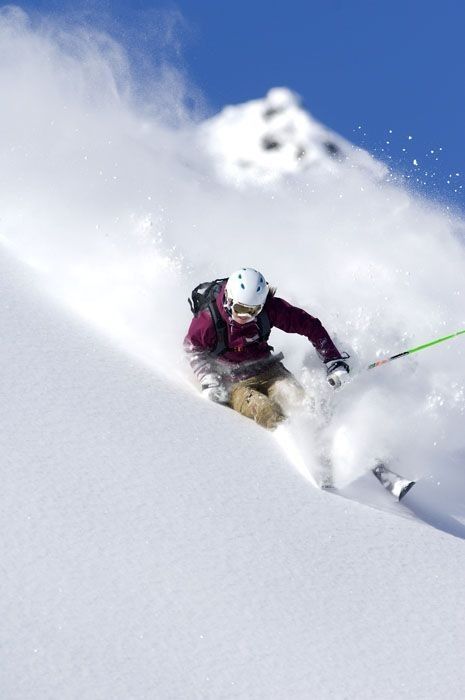RECOMMENDED: slalom skiing explained
>> Click to Shop <<<
Slalom skiing is a popular discipline of alpine skiing that involves navigating a course marked with a series of gates placed close together. The objective of slalom skiing is to ski through the gates as quickly as possible while maintaining control and precision. Here’s an overview of slalom skiing:
1. Course and Gates:
- Slalom courses are set with a series of gates, which consist of pairs of poles or flags positioned close together. The gates are arranged in a zigzag pattern down the slope, requiring skiers to make rapid turns and quick transitions between each gate.
- The gates in a slalom course alternate between red and blue, with each color representing a different direction (e.g., red gates are skied to the skier’s right, while blue gates are skied to the skier’s left). Skiers must navigate each gate in the correct sequence without missing or straddling any gates.
2. Technique:
- Successful slalom skiing requires a combination of technical skill, agility, and precision. Skiers use a variety of techniques to navigate the gates, including:
- Short Turns: Making quick, short-radius turns around each gate to maintain speed and control while minimizing the distance traveled.
- Carving: Using precise edge control and carving techniques to maintain grip on the snow and generate speed through each turn.
- Pole Planting: Establishing rhythm and timing by planting ski poles in the snow near each gate, providing a reference point for initiating turns and maintaining balance.
- Upper Body Positioning: Maintaining a low, compact stance with the upper body facing downhill and the shoulders parallel to the fall line, allowing for efficient and dynamic movements through the course.
3. Speed and Timing:
- Slalom skiing is known for its fast-paced and dynamic nature, with skiers reaching high speeds as they navigate the course. The fastest skiers can complete a slalom course in under a minute, making split-second decisions and adjustments to maintain momentum and control.
- Timing is critical in slalom skiing, as skiers must execute each turn with precision to maintain the proper line and rhythm through the course. Small mistakes or hesitations can result in costly time penalties or disqualifications.
4. Competition:
- Slalom skiing is a competitive sport practiced at all levels, from recreational racing to elite international competitions such as the Winter Olympics and World Cup events. Skiers compete against the clock, with the fastest time determining the winner.
- Slalom races are held on a variety of slopes and terrain, ranging from icy racecourses on steep mountainsides to more forgiving courses on gentler slopes. Races may be held as standalone events or as part of multi-discipline competitions, such as combined or team events.
5. Training and Preparation:
- Competitive slalom skiers undergo rigorous training and preparation to develop the skills and fitness necessary for success. Training may include on-snow practice, dryland conditioning, technical drills, video analysis, and mental preparation.
- Skiers often work closely with coaches and trainers to refine their technique, improve their physical conditioning, and develop race strategies tailored to their strengths and weaknesses.
Overall, slalom skiing is a thrilling and challenging discipline that demands skill, speed, and precision. Whether you’re a recreational skier looking to test your skills in a local race or an elite athlete competing on the world stage, slalom skiing offers excitement, adrenaline, and the opportunity to push yourself to new limits on the mountain.
